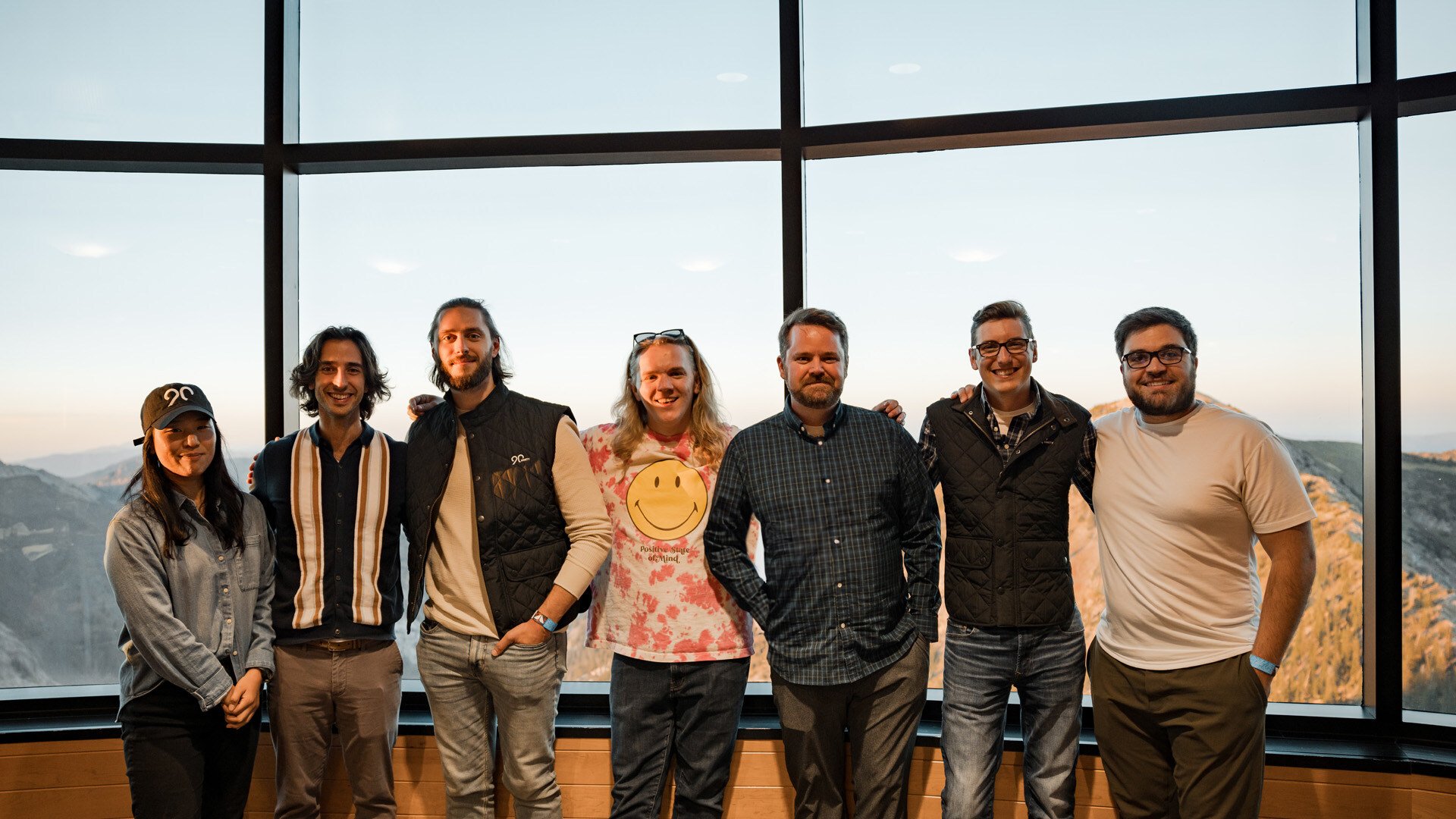7 Holistic Tips for Hiring (and Retaining) Great People
At Ninety, we passionately believe that what makes a company truly great are the people who work there. You can have a clear strategy, innovative product, and streamlined operations, but without the right people on your team, the odds of success will always be stacked against you.
While finding these people won’t be as easy as casting a wide net during the hiring process, it’s an investment that is well worth it. Surrounding yourself with focused, skilled, and capable people is crucial for building, running, and scaling an organization. When your colleagues are deeply aligned with your company’s vision, it’s much easier to have teams that feel motivated and perform well.
But in an age where online job listings receive hundreds (and sometimes thousands) of applications, it can seem daunting to sift through endless resumes and find the proverbial needle in the haystack.
So, how do you go about finding these unicorns? Better yet, how do you go about keeping them once they’re on board? Keep reading for seven actionable tips on how to successfully hire and retain extraordinary people.
Tip #1: Communicate Your Organization's Vision
First things first — you and your Senior Leadership Team (SLT) need to align on a compelling vision. This is essential if you want to have a great shot at attracting and retaining the right kinds of people for your organization.
While the terminology used to describe the components of a vision may vary from organization to organization, a great company vision clarifies the following:
- Core Values
- Compelling Why
- Ideal Customer
- Compelling Value Proposition
- Short- and long-term goals
- Analysis of strengths, weaknesses, opportunities, and threats (SWOT)
All these components help convey who the company is, where it’s going, and how it plans to get there. Effectively communicating the vision at the very beginning of the hiring process not only helps candidates understand their prospective roles but also what those individuals can expect from the company.
Tip #2: Assess Core Values Alignment
Now that you’ve nailed the vision thing, let’s drill down a bit more into Core Values. Ninety defines Core Values as the following:
A fundamental set of beliefs about how we individually and collectively behave as we go about doing our work. These serve as guiding principles, are at the foundation of an organization’s culture, are relevant for all its Ideal Stakeholders, and can endure challenging times.
In order to make the right hires, you need to be crystal clear on what your organization’s Core Values are. There’s no right or wrong way to do this. However, we recommend working with your SLT to craft and refine your list of 3–7 ideal behaviors that you want your team members to exemplify. (Read our brief on Core Values for more detailed steps in this process.)
Refer to these Core Values when assessing candidates to ensure you only bring on new team members who are aligned with your company’s vision and will help sustain your company’s culture.
As an example, here are Ninety’s six Core Values:
- GSSD — Get smart stuff done.
- Team — Collaborate, trust, support, create, and deeply care about living up to our agreements.
- Resilient — Calmly and wisely respond to adversity and setbacks.
- Inquisitive — Seek mastery, ask questions (don’t assume), and continue to learn.
- Best — Continually strive to improve and become the best version of yourself for your personal growth, your colleagues, and the company overall.
- Extra Mile — Proactively go the extra mile when needed.
If the potential new hire doesn’t exemplify your Core Values (and none get by who are likely a “poor fit”), we know they won’t be the right fit for our organization. To help determine this, we use the Entrepreneurial Operating System® method of a “+,” “+/-,” and “-” rating system to denote excellent fit, good fit, and poor fit, respectively. Those who pass this initial checkpoint can continue in the hiring process, and we move on to reviewing specifics about the applicant and their desired role, or Seat.
Tip #3: Assess Competency, Commitment, and Capacity (CCC)
At Ninety, one of our beliefs is that everyone who is able to should pursue work that really matters to them and helps others. But in an age where the needs of both companies and individuals are constantly evolving with the shifting work landscape, it can feel overwhelming to figure out which people will thrive in certain Seats.
The principle of Competency, Commitment, and Capacity (CCC) is our proven framework for making well-founded hiring decisions. It helps us quickly and efficiently identify which candidates we’d like to advance to the next stage of the interview process. Let’s break down each of the three Cs.
Competency
Competency relates to our skills and experiences — our knowledge of an area of our work and our structural fitness for the type of work. Competent people understand the nature of the work they do and how to do it well. Through past experiences and filling the Seat, they acquire the skills and proficiencies necessary to perform the work.
Commitment
Commitment relates to our interest and energy for the work. Are we doing the work in front of us because we’ve been told to, or because we enjoy and want to do it? When we feel genuinely energized by our work and are drawn to it, we enjoy the commitment. We’ll want to become better and better at our roles, accountabilities, and responsibilities to the point of mastery.
Capacity
Capacity relates to whether we can perform a task based on our physical, intellectual, emotional, and time ranges. Our experiences and circumstances dictate some aspects of capacity, while others can be improved. For example, a marathon runner may finish their first race in three hours, but with additional time, training, coaching, and effort, they might gain the capacity to complete that same marathon in less time.
When a candidate checks all the CCC boxes, it’s a sign that everyone is on the right track. Using this concept as a nonnegotiable for considering new hires can save your company a significant amount of time and effort when it comes to making the right hiring decisions.
Tip #4: Determine Right Person, Right Seat
When we look at the overall employee recruitment process, we’re not just thinking about the short-term benefits of filling a position (such as short-term goals or existing projects) — we’re also considering the importance of aligning people with our company’s culture and vision.
There is great strategic importance in committing ourselves to viewing and hiring people through the lens of what we call right person, right seat. This means hiring someone who is both a great cultural fit for the organization (right person) and a solid skills and experience match for the position in question (right seat).
Sometimes, you come across right person, wrong seat. This happens when a person is a great fit for your organization’s culture but isn’t viewed as likely to perform or excel in whichever Seat they’re interviewing for. If this happens, you may want to suggest that the candidate apply for a different role better suited to their specific skill set. If the right seat isn’t available at the time, it’s not a bad idea to hang on to this person’s resume and keep them in mind for future openings with the organization — and be sure to let them know you’ll reach out should the right opportunity arise.
Other times, you may encounter wrong person, wrong seat. That scenario looks like this: Your team interviews an applicant who seems great on paper (industry-related experience, great education, and so on), but something is just “off.” Maybe this person doesn’t share the organization’s Core Values. Maybe the cultural alignment just isn’t there. Whatever the case, despite having the right qualifications, this person simply isn’t the right fit. In fact, it’s possible that someone who ticks all the boxes regarding CCC may technically be able to perform the duties outlined in your job description, but they’re just not a good match for your specific needs or your company. It’s important to recognize this sooner rather than later, as it can result in both parties feeling dissatisfied.
We understand that when you’re pressured or rushed to fill an open Seat, it can be tempting to expedite the interview process and send out offers to people who seem like they’ll be able to jump right in and hit the ground running. But we strongly encourage you to take a breath, slow down, and become crystal clear on the long-term goals and organizational needs for your new hire.
Tip #5: Use Assessments in the Hiring Process
After our initial look at a candidate’s fit (determining RPRS through Core Values and CCC), we can start to dig into their unique work styles and preferences. What is their approach to problem-solving or conflict resolution? How do they prefer to work? Are their natural tendencies a good fit for the needs of the business?
Face-to-face interviews are invaluable during the hiring process, but it’s nearly impossible to truly get to know someone in 30 or 60 minutes — let alone understand their work style. To supplement this, we’re big proponents of leveraging tools like logic tests and workplace-based assessments.
At Ninety, we use three different third-party tools in the hiring process: the Kolbe A™ Index, TypeCoach™, and the PRINT® Survey. While we don't use these tools as a filter or to make hiring decisions exclusively, we’ve found that they help us develop a much better understanding of a candidate's communication styles, working preferences, and motivations.
With this information, we’re able to ask more effective questions during the interview process. After hiring, these tools pave the way for smoother onboarding. Everyone at Ninety has completed these assessments, so we're able to openly share our results to deepen interpersonal connections.
Modern technology and science have provided tremendous tools for evaluating the strengths of candidates. If the assessments we highlighted aren’t right for your organization, there are plenty of others to choose from (CliftonStrengths, DiSC®, or The Predictive Index, to name a few). But we strongly recommend finding a balanced combination of solutions that help your organization find the right people, hire them, and effectively onboard them into the right Seat.
Tip #6: Create an Agreements-Based Culture
Once you’ve hired the right person and put them into the right Seat, it’s up to your organization to ensure they’re working for a company they want to stick around for years and years to come. Doing so means fostering a high-trust environment in which trust is given and received by all parties. This leads to the importance of creating an agreements-based culture.
We believe in making agreements as opposed to setting expectations. Agreements help build high-trust relationships in which everyone in the organization shares a strong level of commitment because they’re so well aligned in character, competency, and human connection (the three dimensions of trust).
When expectations are turned into agreements, team members feel seen and supported. They feel comfortable bringing new solutions for problem-solving to the table, and they know we care about who they are, what they do, and how they think.
All this leads to enhanced clarity and alignment across the organization, in addition to improved communication and adaptability. The trickle-down effects of this enable decision-makers to recruit, hire, and retain the right people to keep your high-trust culture intact.
Tip #7: Champion Continuous Feedback and Development
Finally, to retain your carefully selected team members, it’s important to ask for feedback regularly. How are things going? What do they enjoy? What could be better? Equally as important is the feedback you’re able to give them regarding performance and cultural fit. To support continuous professional growth, routine check-ins should be scheduled between employees and their team leaders to discuss areas of excellence as well as opportunities for growth.
With new hires in particular, we advise setting up check-ins at the 30-, 60-, and 90-day marks to establish an open dialogue.
Rather than conducting annual reviews, we teach and promote the value of team members and their team leaders having quarterly conversations that focus on how things are going for both of them. A regular cadence of performance and job fit discussions should keep everyone aware of how they’re doing and what (if anything) they might need help with or might need to focus on.
We also find that conducting annual company-wide engagement interviews (we’ll write a blog on this) can be useful in learning how things are generally going for your team members — which provides invaluable insights on how the organization can improve the employee experience. These interviews can either be face-to-face (we do this on a one-on-one basis) or done through anonymous forms, with any strong trends or patterns being noted for future improvements.
Final Thoughts
A thorough and values-aligned hiring process is a cornerstone of a strong organizational culture.
Hiring great people starts with a clear company vision, which includes a defined set of Core Values. Once you have those in place, it’s up to your People team to ensure job listings convey your company’s beliefs and goals — not just for the position, but for the business overall. Incorporate reliable benchmarks beyond Core Values alignment into your hiring process (such as our CCC framework) to determine right person, right seat and make sure applicants are solid cultural fits. Once you’ve hired the right person, it’s essential to create a high-trust environment by making agreements, maintaining open communication, and proactively and systematically seeking feedback.
If like attracts like, then the right kinds of people will naturally be drawn to your company. Once word gets out that your company is a truly great place to work, the number of driven, talented individuals applying to your openings will only increase. Case in point, Ninety made 70 offers in 2023 and had 68 acceptances. Use our tips to help shape or reimagine your holistic recruitment approach to find and retain the best people for your organization.







